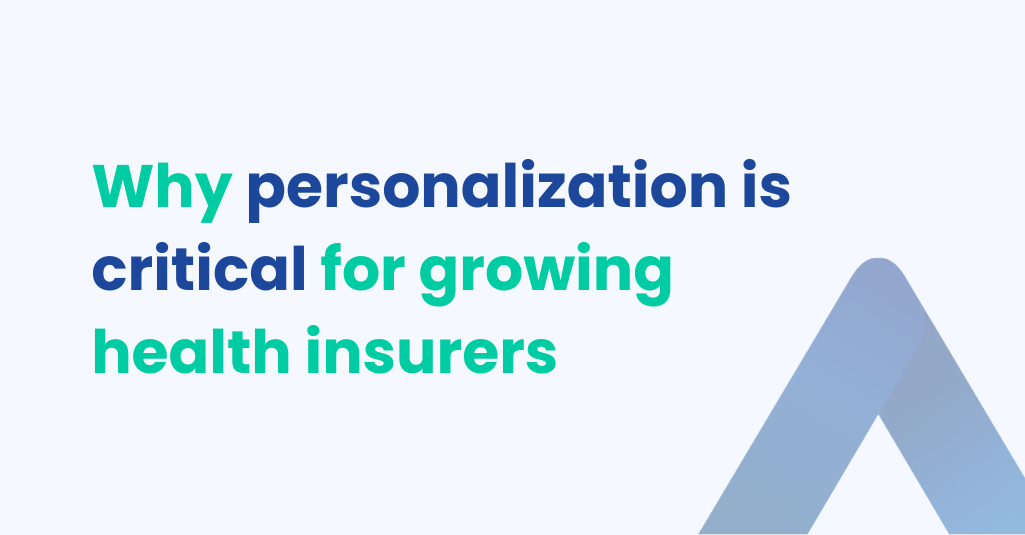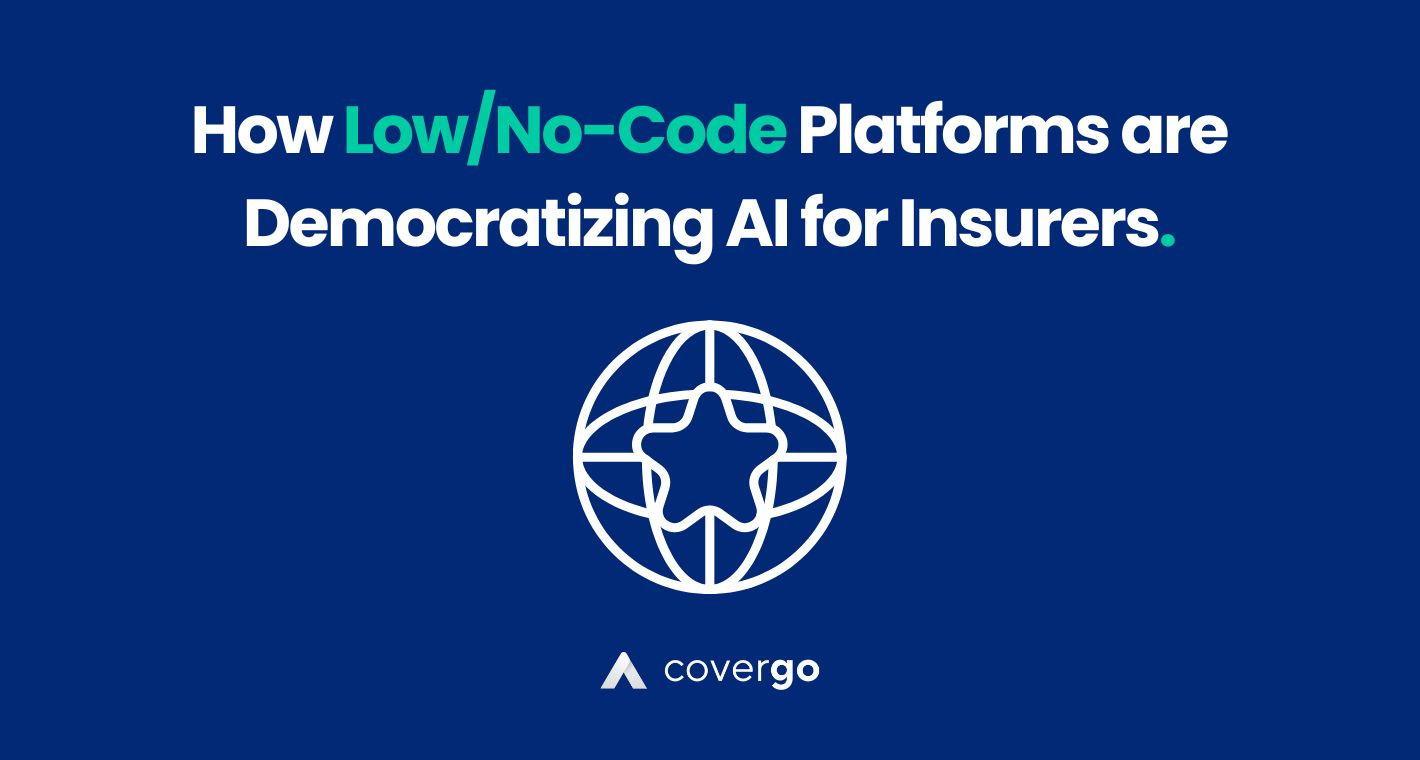The insurance landscape is ever-evolving.
In the changing landscape, traditional insurance plans are no longer enough. Such plans tend to be rigid in their approach, with little to no room to focus on personalizing the policy to customers’ unique needs. Thanks to the rise of digital platforms, there has never been a better time than the present for insurers to focus on catering to the needs of their customers.
Health insurers, in particular, stand to benefit from scaling up their personalization efforts.
Here’s a look at the untapped potential of implementing an effective personalization program for such insurers.
What personalization means for health insurers?
Anything pertaining to health automatically demands hyper-personalization, as the needs of every individual are unique. In the case of health insurers, every policy sold ensures that each beneficiary receives the treatment they require. Paying attention to personalizing the policy offered allows customers to pick something that aligns with their health needs and covers the latest medical treatment offered in the field.
For example, when selling an insurance policy, health insurers can use a recommendation engine that suggests the ideal policy based on individual patient data and trends based on patients with similar symptoms. Insurers can also leverage AI to suggest the right insurance plan based on the appropriate treatment plan for such patients.
Why health insurers cannot neglect personalization?
The biggest reason to personalize insurance policies for each customer is that everyone expects it in the digital age. Customers expect health insurance policies tailored to their specific needs in the era driven by tracking analytics. The health needs of every insured person are different, and not everyone may respond to the same treatment even when displaying similar symptoms. That’s why customers expect the coverage offered by insurers to account for all scenarios and match up with what science offers.
Generic health insurance policies are a passe. Instead, adapting bundling can help insurers create customized offerings to impress their customers. So insurers can give the customers a choice to pick the amount of coverage they want, select add-ons they need, and opt out of coverage they don’t need.
For instance, there are several highly specialized treatment protocols, such as targeted therapy, biological agents, and regenerative medicine, that physicians rely on to cure chronic medical conditions like Chronic myeloid leukemia and hepatitis C that do not respond to traditional treatment plans. A health insurance policy can be well-rounded and comprehensive only when flexible and capable of addressing customer demands.
Moreover, extending personalized offerings means insurers can drive more leads, boost customer retention (especially those with expiring policies), and cross-sell new products to get an edge over their competitors. This can help enhance customer relationships, boost loyalty, and increase retention.
It is also pertinent to note that personalization directly impacts the bottom line of insurers — in fact, according to the Boston Consulting Group, insurance firms that have embraced customized solutions have recorded revenue growth of 6 to 10 percent.
How to implement personalization in health insurance?
Thanks to the meteoric rise of the Internet of Things (IoT) and other digital technologies, health insurers now have access to previously inaccessible insights. Leveraging the right digital technology can help insurers collect more than generic demographic information such as age, sex, and education level.
In other words, only going digital can help insurers to think beyond the one-size-fits-all mode and provide personalized policy offerings at par with the developments in the medical field and the needs of the client in an easy and scalable manner. While there is no one personalization strategy all health insurers can follow, here are a few ways to implement it.
-
Insurance firms can store behavioral data and employ machine learning technology to target personalized products to the customer. For example, someone looks up ‘insurance policies for breast cancer treatment’ online. Insurers can track the user’s online activity to recognize that this person is looking for suitable health insurance plans that provide coverage for breast cancer treatments. They can accordingly pitch the relevant policies they offer.
-
In the digital age, a wealth of information is available from various wearables and smart devices that provide deeper insights into a person’s lifestyle. Health insurers can incorporate supplemental data such as daily workouts, sleep cycles, and food intake to customize the insurance premium. They can also offer personalized health recommendations through AI chatbots and incentivize the customers to achieve fitness goals to earn reward points which can be redeemed while paying the premium.
-
Insurers can also review historical medical information and employ predictive analytics to forecast whether a client is more likely to develop a chronic illness and offer a personalized policy. They can also use the data to incentivize their customers to adopt a healthy lifestyle.
-
Bundling policies is another way to personalize the offering. For example, suppose a young woman in her mid-20s is looking to purchase individual health insurance that doesn’t provide coverage for maternity and childbirth. In that case, insurers can consider bundling the two policies into a single package for the desired coverage.
Even the marketing of the policies can be personalized through digital distribution, which refers to deployment and sales through digital modes. Using direct distribution channels saves insurers from paying commissions to agents or intermediaries. For example, health insurers can boost engagement with the audience through their social media channels, prompt them to download their app, and position the relevant health insurance products before them through the app via chatbots. They can also manage onboarding, and policy management and settle claims through the app.
In fact, platforms such as CoverGo can assist insurers in delivering a digital insurance experience, provide more personalized offerings and innovate without overhauling the entire system. Attempting to innovate from scratch is both expensive and time-consuming.
With CoverGo, health insurers can follow an embedded insurance strategy to deploy products on third-party marketplaces, manage claim submissions, ensure all communication channels can be managed within a single interface, and engage directly with clients. Insurers can also rely on 500+ APIs of CoverGo that have been specially designed for innovating without writing a single line of code.
Final words
A forward-thinking insurer stands to benefit immensely from embracing personalization. Since there are various ways in which personalization can be achieved, it is essential to follow a scalable strategy that can fulfill customer demands.
Need a reliable platform to develop personalized insurance software for your firm? Request a demo with CoverGo team to learn how most prominent health insurance players are using personalized offerings to transform their business without completely changing the system within which they operate.



